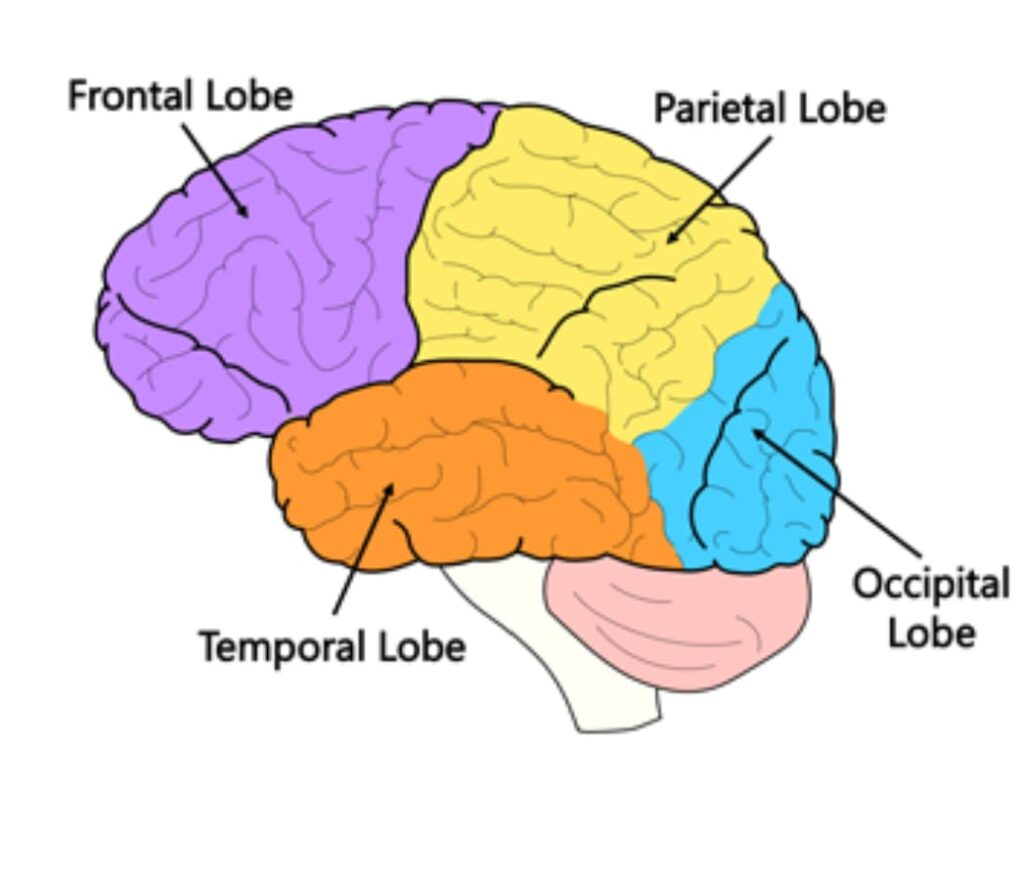The largest and topmost part of the brain is called the cerebrum. Two-thirds of the weight of the brain is made up of the cerebral hemispheres, which make up the cerebrum. Language and speech are governed by the functionally dominant hemisphere, which is often the left. The opposing hemisphere decodes spatial and visual information.
- The inner core of the cerebral hemispheres is made up of myelinated nerve fibers, or white matter, and the outer cortex is made up of gray matter. The cerebral cortex is in charge of coordinating muscular activity, higher intellectual activities, and the integration of sensory inputs.
Lobes Of Cerebrum
The four major lobes are also located within the cerebral cortex.
- The Frontal Lobe
- The Parietal Lobe
- The Occipital Lobe
- The Temporal Lobe

Frontal Lobe:
- The frontal lobes are crucial for controlling higher order executive functions, expressive language, and voluntary movement.
- The ability to plan, organize, initiate, self-monitor, and manage one’s responses in order to accomplish a goal is referred to as having executive functions.
- Our personality resides in the frontal lobes, which are thought of as our control center for emotion and behavior.
Parietal Lobe:
- There are two distinct functional regions in the parietal lobes. In the first, sensory data from various senses is combined to create a single perception (also known as cognition).
- The second is integrating sensory information, which is primarily visual and helps us create spatial representations of the environment.
- As we continue to engage with the outside environment, the parietal lobes house a number of separate and ever-updating spatial reference maps of the body.
Occipital Lobe:
- The part of the brain that processes vision is called the occipital lobe.
- It is linked to memory formation, object and face identification, color perception, distance and depth perception, and visuospatial processing.
Temporal lobe:
- It is also considered that the temporal lobes are crucial for processing affect/emotions, language, and some facets of visual perception.
- For the majority of people, the dominant temporal lobe is on the left side, and it is responsible for language comprehension, verbal learning, and memory.
For Further Reading:

